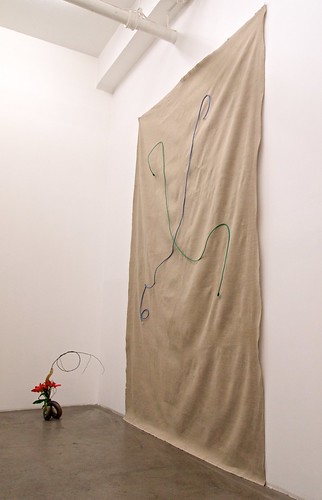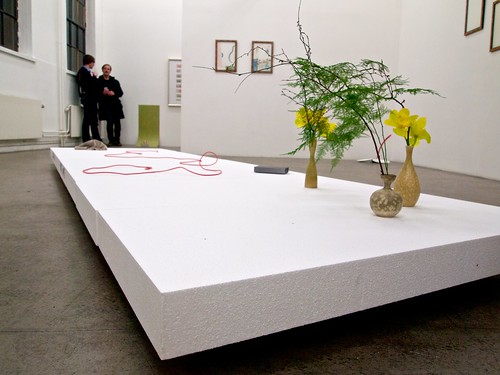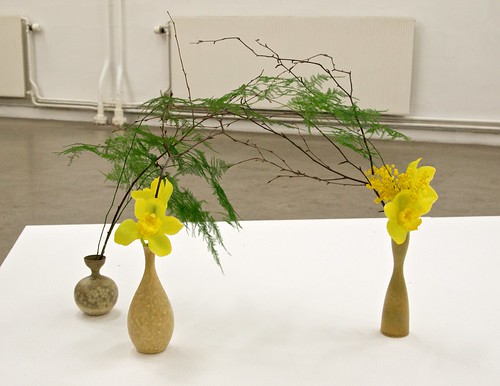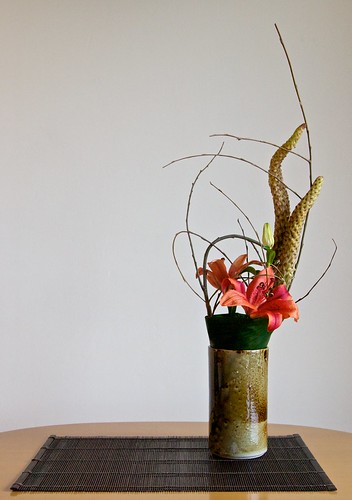In the Sogetsu School curriculum there are two lectures about using fruits and vegetables as the main materials in ikebana arrangements. The first one, Morimono, belongs to the category where plant materials are arranged either fleeting in water or placed directly on a tray or a table. The other lecture is a freestyle arrangement where the focus is on creating a sculptural form using fruits and vegetables. In addition to this one can of course argue that the lesson about arranging fruit-bearing branches is also about using fruits.
Ginger root, pomegranate and turnips.
This week I'll be posting some pictures of arrangements with fruits and vegetables. I'm starting off with a very simple morimono arrangement on a wooden tray. This is not a very inventive arrangement, but in a way it's a good illustration on how to translate the principles of three main branches to other materials than branches.
In traditional ikebana arrangements the balance is achieved from the lengths and proportions of the three main branches that are creating a triangular shape. Transferred to fruit and vegetables the balance is not about the length but more about the shape and weight of the fruit. The most dominating fruit or vegetable will then work as the Shin branch. A fruit that has less volume but is still quite weighty will be a complementary Soe, and one or several smaller fruits with a different character will work as Hikae. You'll get the same triangular shape, but you'll have to think more in terms of volume and wight than of length.
Morimono arrangements are used to symbolize abundance and prosperity, often in relation to the autumn harvesting and the richness of what the earth can produce. These arrangements have a history that can be traced back to fruit offerings that were placed before Buddha statues in temples.
If you return this week you'll see more of the tasty temptations placed on this tray, and also other fruits and vegetables. Stay tuned.
























